Link to my review and measurement index thread where one can also find a full review overview, more information about myself as well as my general-ish audio and review manifesto: https://www.head-fi.org/threads/956208/
I only give full stars. My ranking/scoring system does not necessarily follow the norm and is about as follows:
5 stars: The product is very good and received the "highly recommended" award from me.
4 stars: The product is very good and received the "recommended" award from me.
3 stars: The product is good/very good, but not outstanding/special enough to get any of my two awards. ["Thumbs Up"]
2 stars: The product is only about average or even somewhat below that and somewhat flawed/flawed in some areas. [neither "Thumbs Up" nor "Thumbs Down"]
1 star: The product is bad/severely flawed to outright bad. ["Thumbs Down"]
Chord Electronics Mojo
Source:
Personal unit.
Miscellaneous:
Very small.
High build quality.
I'm not fully sure whether the “balls” are made of glass or plastic.
All of the labels and logos are finely engraved (and not laser-etched, so they shouldn't fade over time).
Unique and unusual design, but I like it.
The four small grooves are actually there to help stacking the device using thick, round rubber bands.
Decent amount of inputs (micro USB, full-sized optical input (something that is only rarely found on portable devices – I really like the fact that the Chord Electronics Mojo has got one), mini coaxial input). Separate USB charging and data sockets.
Poor battery life (probably around 6 hours in real-world listening scenarios) and fast battery drain when it is turned off.
USB oscillators chirp and whine with many (but not all) chargers while charging.
The quirky balls rotate but don't actually do anything. They're basically just "caps" on top of actual buttons, so one has to press them in in order to actually change the volume and operate the device etc.
The brightness of the illuminated balls can be reduced adjusted in two steps by pressing both volume buttons. Holding all three buttons during the boot process jumps straight to 3 V output voltage ("Line Out Mode"). Thereafter, that value can still be altered, though.
User interface (volume status display, sample rate display) is not easy to get used to and not intuitive at all as it consists of nothing but colours.

Sound:
The Mojo is a DAC that uses upsampling.
No traditional DAC chip but instead an FPGA-based solution running the designer's code is used inside.
The two 3.5 mm headphone outputs output the same signal in parallel (and therefore act just like a normal stereo y-splitter adapter).
Volume Control:
No intuitive volume indicators; volume indicated by the colour of the two volume adjustment balls.
The lowest possible volume setting could and should be lower in order to listen quietly with very/extremely sensitive in-ears (that’s quite a disappointment for me), but should be fine-ish for many people.
Rather big step size in the very low adjustment range. Gets better (smaller steps) the higher the volume setting is (1 dB if I recall correctly).
As the volume is adjusted digitally, channel matching is thankfully excellent.
The last setting is thankfully saved.
Hiss Performance:
Using very sensitive, near-extremely sensitive in-ears such as my Shure SE846 or Ostry KC06A and Pai Audio MR3, there is a mild to moderate amount of audible hiss; in this regard, the Mojo is about comparable to the Cowon Plenue D or Plenue J, hisses a slight bit more than the FiiO Q5 with AM1 module, hisses clearly more than my iBasso DX90 or the DX200 and DX220 as well as the Apple USB-C to Headphone Jack Adapter, and is a good bit away from being ideally hiss-free as my RME ADI-2 DAC’s IEMs output (and even its PHONES output) is.
While the Mojo is ultimately still on the better side in terms of hiss performance with very sensitive in-ears and not “horrible”, it is ultimately not quiet enough for extremely sensitive in-ears, and I would have expected it to perform better.
Frequency Response (no Load):

FR unloaded
The response characteristic is similar to that of a slow roll-off filter.
Output Impedance (various Loads):

FR loaded – Ultimate Ears Triple.Fi 10

FR loaded – various IEMs

FR loaded – various full-sized Headphones

FR loaded – into external Amplifier’s Line Input (Leckerton UHA-6S.MKII)
The frequency response deviation one can see is not what one would typically see from devices with a consistent output impedance over the entire frequency response. The reason behind that is that the Mojo’s output impedance is very close to ideal 0 Ohms over most parts of its frequency spectrum, but climbs towards slightly below 2 Ohms, as measured and confirmed by several other sources, towards 20 kHz, which is why lower impedance loads will cause a drop in the high to very high frequencies that can already become audible, depending on the in-ears or headphones that were used, whereas the output frequency response changes towards an ideally flat line the higher the connected load’s impedance is. This, to me, is definitely another aspect about the Chord Mojo that is somewhat disappointing.
Subjective Listening Impressions:
While the vast majority of (properly designed) devices (with low output impedance and good-enough hiss performance), with properly matched volume in a direct (sighted) side-by-side comparison sound identical enough to me in real-world listening scenarios, with sometimes only very minor, difficult to point out reproducible differences with in-ears and usually no audible difference with full-sized headphones, the Mojo is a little different in this regard.
Using it directly with in-ears (but not those that would make it obvious right away due to their sensitivity and low impedance), it sounds just a touch “smoother”/”softer” in terms of cymbal attack. Clearly just a small nuance and rather negligibly small in an everyday scenario and even during critical non-comparative listening, but nonetheless reproducible.
However, what’s noticeable to me as well, is that the soundstage also appears to be a little “smaller” than usual (this is however only something I am hearing with rather low impedance in-ears and none of my full-sized headphones that on the other hand still appear just a touch "softer" in the upper highs’ cymbal attack, which is also something that carries over when using the Mojo as a pure DAC connected to a separate amplifier, which is a characteristic that happens only very rarely). It's neither "better" nor "worse", but just a slight bit "different" sounding and probably nothing that one would reproducibly notice without properly done and exhausting direct comparisons, but nonetheless with a bit of its own “sound character” while sounding audibly very transparent even with critical in-ears (most well-enough modern devices do).

Conclusion:
While clearly not a bad device, the Chord Electronics Mojo is a good bit shy of being close to objectively perfect when used with very sensitive, low impedance in-ears due to its still reasonable but not ideal hiss performance and its output impedance rise towards the higher frequencies that can already lead to audible tonality changes depending on the connected load (as well as its rather bad battery life and high battery drain).
While not fully ideal for my personal requirements that are stricter than most other peoples’, its volume control with a fair number of steps and 1 dB per step attenuation once a certain threshold is passed is something that is good about it, along with its build quality and reasonable amount of digital inputs. Ultimately though, it is a device that is definitely better suited to be used with higher impedance, lower sensitivity loads.
Photos:

I only give full stars. My ranking/scoring system does not necessarily follow the norm and is about as follows:
5 stars: The product is very good and received the "highly recommended" award from me.
4 stars: The product is very good and received the "recommended" award from me.
3 stars: The product is good/very good, but not outstanding/special enough to get any of my two awards. ["Thumbs Up"]
2 stars: The product is only about average or even somewhat below that and somewhat flawed/flawed in some areas. [neither "Thumbs Up" nor "Thumbs Down"]
1 star: The product is bad/severely flawed to outright bad. ["Thumbs Down"]
Chord Electronics Mojo
Source:
Personal unit.
Miscellaneous:
Very small.
High build quality.
I'm not fully sure whether the “balls” are made of glass or plastic.
All of the labels and logos are finely engraved (and not laser-etched, so they shouldn't fade over time).
Unique and unusual design, but I like it.
The four small grooves are actually there to help stacking the device using thick, round rubber bands.
Decent amount of inputs (micro USB, full-sized optical input (something that is only rarely found on portable devices – I really like the fact that the Chord Electronics Mojo has got one), mini coaxial input). Separate USB charging and data sockets.
Poor battery life (probably around 6 hours in real-world listening scenarios) and fast battery drain when it is turned off.
USB oscillators chirp and whine with many (but not all) chargers while charging.
The quirky balls rotate but don't actually do anything. They're basically just "caps" on top of actual buttons, so one has to press them in in order to actually change the volume and operate the device etc.
The brightness of the illuminated balls can be reduced adjusted in two steps by pressing both volume buttons. Holding all three buttons during the boot process jumps straight to 3 V output voltage ("Line Out Mode"). Thereafter, that value can still be altered, though.
User interface (volume status display, sample rate display) is not easy to get used to and not intuitive at all as it consists of nothing but colours.
Sound:
The Mojo is a DAC that uses upsampling.
No traditional DAC chip but instead an FPGA-based solution running the designer's code is used inside.
The two 3.5 mm headphone outputs output the same signal in parallel (and therefore act just like a normal stereo y-splitter adapter).
Volume Control:
No intuitive volume indicators; volume indicated by the colour of the two volume adjustment balls.
The lowest possible volume setting could and should be lower in order to listen quietly with very/extremely sensitive in-ears (that’s quite a disappointment for me), but should be fine-ish for many people.
Rather big step size in the very low adjustment range. Gets better (smaller steps) the higher the volume setting is (1 dB if I recall correctly).
As the volume is adjusted digitally, channel matching is thankfully excellent.
The last setting is thankfully saved.
Hiss Performance:
Using very sensitive, near-extremely sensitive in-ears such as my Shure SE846 or Ostry KC06A and Pai Audio MR3, there is a mild to moderate amount of audible hiss; in this regard, the Mojo is about comparable to the Cowon Plenue D or Plenue J, hisses a slight bit more than the FiiO Q5 with AM1 module, hisses clearly more than my iBasso DX90 or the DX200 and DX220 as well as the Apple USB-C to Headphone Jack Adapter, and is a good bit away from being ideally hiss-free as my RME ADI-2 DAC’s IEMs output (and even its PHONES output) is.
While the Mojo is ultimately still on the better side in terms of hiss performance with very sensitive in-ears and not “horrible”, it is ultimately not quiet enough for extremely sensitive in-ears, and I would have expected it to perform better.
Frequency Response (no Load):
FR unloaded
The response characteristic is similar to that of a slow roll-off filter.
Output Impedance (various Loads):
FR loaded – Ultimate Ears Triple.Fi 10
FR loaded – various IEMs
FR loaded – various full-sized Headphones
FR loaded – into external Amplifier’s Line Input (Leckerton UHA-6S.MKII)
The frequency response deviation one can see is not what one would typically see from devices with a consistent output impedance over the entire frequency response. The reason behind that is that the Mojo’s output impedance is very close to ideal 0 Ohms over most parts of its frequency spectrum, but climbs towards slightly below 2 Ohms, as measured and confirmed by several other sources, towards 20 kHz, which is why lower impedance loads will cause a drop in the high to very high frequencies that can already become audible, depending on the in-ears or headphones that were used, whereas the output frequency response changes towards an ideally flat line the higher the connected load’s impedance is. This, to me, is definitely another aspect about the Chord Mojo that is somewhat disappointing.
Subjective Listening Impressions:
While the vast majority of (properly designed) devices (with low output impedance and good-enough hiss performance), with properly matched volume in a direct (sighted) side-by-side comparison sound identical enough to me in real-world listening scenarios, with sometimes only very minor, difficult to point out reproducible differences with in-ears and usually no audible difference with full-sized headphones, the Mojo is a little different in this regard.
Using it directly with in-ears (but not those that would make it obvious right away due to their sensitivity and low impedance), it sounds just a touch “smoother”/”softer” in terms of cymbal attack. Clearly just a small nuance and rather negligibly small in an everyday scenario and even during critical non-comparative listening, but nonetheless reproducible.
However, what’s noticeable to me as well, is that the soundstage also appears to be a little “smaller” than usual (this is however only something I am hearing with rather low impedance in-ears and none of my full-sized headphones that on the other hand still appear just a touch "softer" in the upper highs’ cymbal attack, which is also something that carries over when using the Mojo as a pure DAC connected to a separate amplifier, which is a characteristic that happens only very rarely). It's neither "better" nor "worse", but just a slight bit "different" sounding and probably nothing that one would reproducibly notice without properly done and exhausting direct comparisons, but nonetheless with a bit of its own “sound character” while sounding audibly very transparent even with critical in-ears (most well-enough modern devices do).
Conclusion:
While clearly not a bad device, the Chord Electronics Mojo is a good bit shy of being close to objectively perfect when used with very sensitive, low impedance in-ears due to its still reasonable but not ideal hiss performance and its output impedance rise towards the higher frequencies that can already lead to audible tonality changes depending on the connected load (as well as its rather bad battery life and high battery drain).
While not fully ideal for my personal requirements that are stricter than most other peoples’, its volume control with a fair number of steps and 1 dB per step attenuation once a certain threshold is passed is something that is good about it, along with its build quality and reasonable amount of digital inputs. Ultimately though, it is a device that is definitely better suited to be used with higher impedance, lower sensitivity loads.
Photos:


 The DAC is very clean, adding an amp afterwards usually degrades the signal. Signature leans towards the brighter side, with medium attack and impact. I.e. in bassy tracks, you can hear the bass but not feel them. Mids are liquid smooth, with hints of harshness on both ends. Overall, this is great for a portable device of this size, but maybe not at the given price.
The DAC is very clean, adding an amp afterwards usually degrades the signal. Signature leans towards the brighter side, with medium attack and impact. I.e. in bassy tracks, you can hear the bass but not feel them. Mids are liquid smooth, with hints of harshness on both ends. Overall, this is great for a portable device of this size, but maybe not at the given price. but I thought I’d give it a shot. As to be expected the Mojo did not do a good job with my HE-6’s.
but I thought I’d give it a shot. As to be expected the Mojo did not do a good job with my HE-6’s. 



























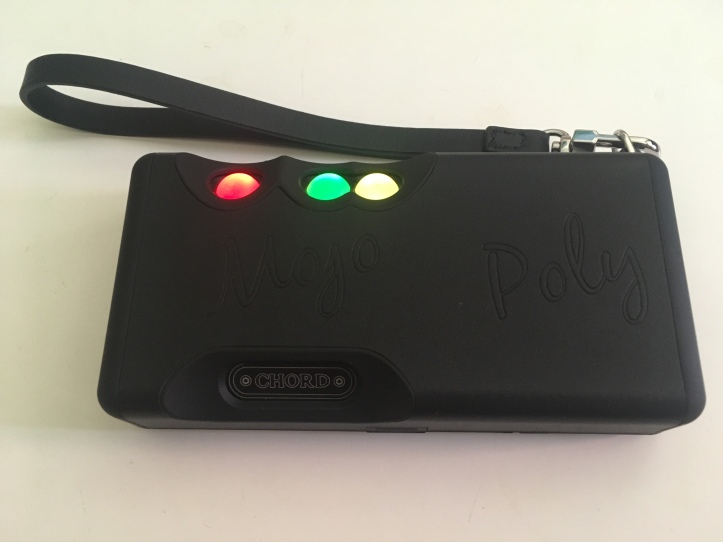











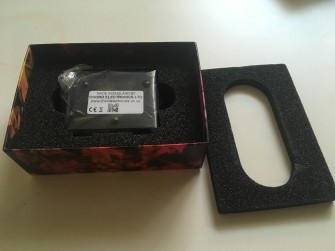
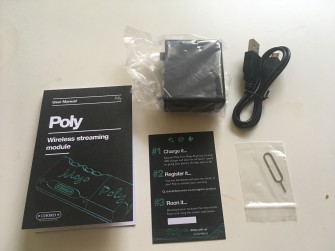




























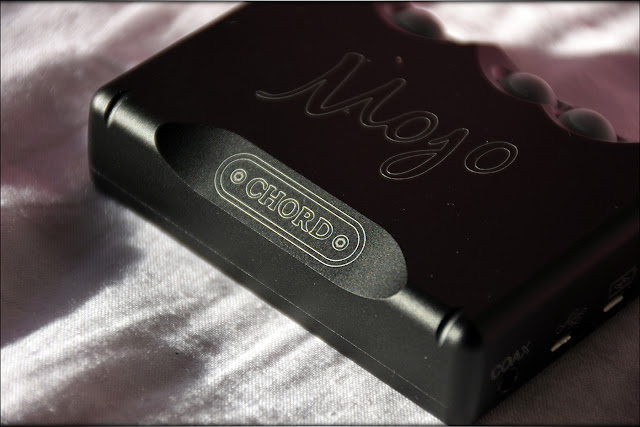
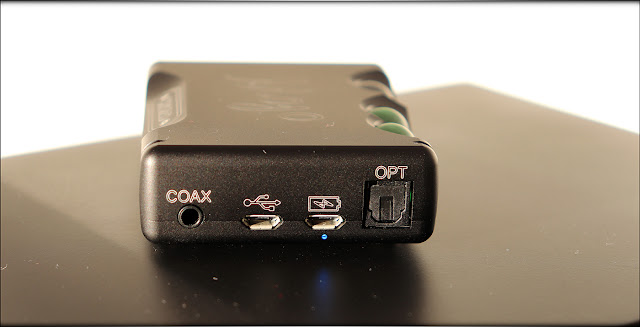








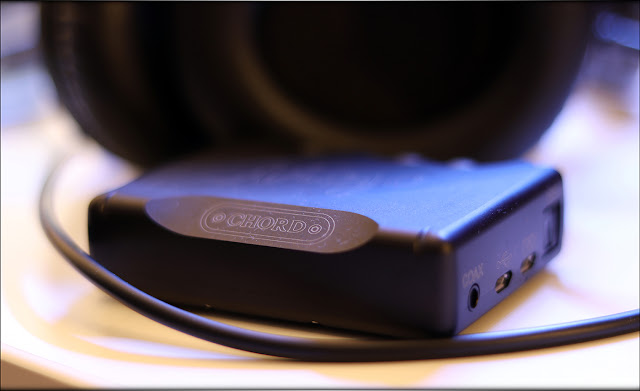
































Where did you get the yellow jacket for MOJO?